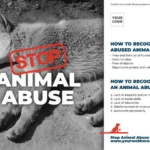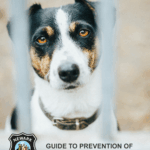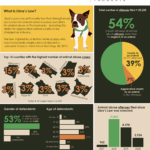In the digital age, where social media serves not only as a platform for connection and engagement but also as a conduit for advocacy, the question of reporting animal cruelty arises with increasing urgency. Platforms like Instagram, Facebook, and Twitter have unwittingly become stages where acts of compassion and cruelty are displayed. However, the curative potential of these platforms is often complicated by their policies and limitations. As animal welfare advocates navigate the labyrinth of social media, it becomes imperative to discern how to effectively report animal cruelty within these virtual spheres.
Instagram, a visual-centric platform, attracts millions daily, serving as a canvas for artists, influencers, and ordinary users alike. It is here that we witness the stark juxtaposition of beauty and brutality. Pictures of animal abuse, neglect, or exploitation can surface, raising awareness and provoking outrage. Yet, the question looms: can individuals effectively report such heinous acts on Instagram? The simple answer is yes, but the complexity lies in understanding the procedures and limitations inherent in reporting mechanisms.
The process to report animal cruelty on Instagram begins with identifying the content that violates community guidelines. Instagram’s policies explicitly prohibit the depiction of animal abuse, but users must take the initiative to report it. By tapping the three-dot menu on a post and selecting “Report,” users can alert the platform to the offending material. It’s a straightforward mechanism, but one that is often underused. This underutilization may stem from the overwhelming nature of social media, where calls for action can feel lost amidst the cacophony of posts.
Moreover, the psychological toll of witnessing animal cruelty can create a barrier. Many users may scroll past alarming images of abuse, paralyzed by emotional turmoil. In such instances, understanding the broader context becomes crucial. The sharing of distressing content can incite a collective outrage that propels change; however, it is also important to recognize the desensitizing effects of ubiquitous violence on social media. The emotional fatigue may lead to an apathy that hinders reporting efforts.
Apart from personal barriers, the efficacy of social media as a tool for reporting animal cruelty is further complicated by the rapid-fire nature of content dissemination. When a post depicting animal abuse violates guidelines, the system is not always capable of addressing the issue promptly. Reports may wade through an inundated queue, leading to delays that can allow further victimization of animals. Users must also grapple with the fact that not all reports result in immediate action or visible accountability, which can foster a sense of helplessness.
The discourse around reporting mechanisms leads us to consider the implications of social responsibility. Social media platforms bear a significant weight in addressing the vast spectrum of animal cruelty. As consumers of content, users play a pivotal role in shaping the norms around reporting. One’s responsibility doesn’t cease with acknowledging the existence of abuse; it extends to actively participating in the reporting process and advocating for enhanced policies that prioritize animal welfare.
However, it is vital to understand the limitations of social media. While platforms like Instagram can facilitate awareness, they cannot replace traditional methods of reporting abuse. For instance, contacting local law enforcement or animal control agencies remains an essential avenue for addressing incidents of cruelty that require immediate intervention. Social media operates within a constrained framework; thus, while it can amplify voices and create awareness, it does not possess the authority to enact legal repercussions against abusers.
Additionally, the permanence of digital content highlights the responsibility attached to sharing. The viral nature of social media can sometimes lead to misinformation. In hurried attempts to expose cruelty, facts can become blurred, and narratives may shift. Users must be vigilant in verifying the authenticity of content before sharing to prevent further harm. Misinformation not only detracts from the crucial dialogue surrounding animal protection but can also inadvertently shield abusers from accountability.
To transform the fascination with animal welfare into actionable change, advocacy groups must harness the power of social media wisely. Campaigns designed to educate the public about reporting mechanisms can significantly influence the participatory patterns of users. Engaging narratives that combine factual information with emotional resonance can foster a sense of community and collective responsibility. These campaigns can demystify the reporting process, encouraging individuals to take proactive steps against cruelty rather than feeling paralyzed by the overwhelming volume of content.
Another facet deserving attention is the ethical implications of sharing graphic content involving animal cruelty. While such content can elicit strong emotional reactions, it often requires a delicate balance between raising awareness and respecting the dignity of the animals involved. There is a fine line between fostering outrage and perpetuating violence. Advocates must navigate these waters thoughtfully, considering the impact of their messaging.
Finally, it is essential to advocate for the evolution of social media policies. As conversations about animal welfare gain traction, platforms must prioritize the integration of measures that address and mitigate cruelty effectively. This can involve refining reporting mechanisms, enhancing user privacy during the reporting process, or incorporating educational resources that guide users on how to respond to instances of cruelty.
In conclusion, while social media platforms like Instagram enable the reporting of animal cruelty, the efficacy of these reports hinges upon user engagement, understanding of limitations, and the broader societal commitment to animal welfare. By fostering an informed and proactive community, the conversation surrounding animal cruelty can evolve from fascination to actionable change, driving the movement towards a more compassionate world for all beings.









